One of the most wonderful creatures ever found in nature is the Chameleon, which belongs to the clade of distinctive and highly specialized lizards.
Here is a little detail covering this creature.
- Common name we know about this species is Meller’s Chameleon.
- Scientifically, we called him “Trioceros melleri” .
- Commonly counted in the Reptile family.
- Average lifespan is nearly 12 years.
- Weight is about 14.4 Ounces.
- Common length is 21 inches.
- They are carnivores.
1: Color Changing Ability
- It is really something surprising to know that chameleons are capable of changing the color of their body.
- This feature can be rightly considered as an adaptation for safety and escaping from potential predators.
- When any serious danger hovers over their heads, these organisms quickly change the color of their bodies to match those of bushes and trees.
2: Diet
- Kids will find this fact very interesting that in the jungle, their tongues reach the prey within a fraction of a second and hold the prey by forming a small suction cup at the bulbous ball-like muscular tip.
- Sometimes, they also consume greenery for the sake of brining variety to their diet. When you are feeding your pet chameleons with insects, do be careful of the ladybugs that are toxic.
- Veiled Chameleon from Arabia, eats leaves when there is no water available and is totally dependent upon crickets. In a day, a chameleon eats 10-15 crickets normally.
3: How do they look ?
If you are interested in observing the color ranges and the changing body shade patterns in these friends of lizards, get access to the internet and search for the chameleon pictures. If you do so, you are sure to be fascinated by their brilliant appearances. Though the majority of the species occur in a wide range of colors and can change the appearance from brown to green and black, some are even capable of changing their body color into almost any shade. It is also worth noticing that the male members are usually more ornamented than those of their female counterparts. On the body of the males, you can locate some additional decorations, such as horn-like projections, nasal protrusions, and the presence of large crests on the top of their heads.
4: Where to find them ?
Described below are some of the puzzling and mind blowing areas where chameleons live.
- At present, you can find as many as one hundred and sixty (160) species of chameleon lizards with a range of colors, and many of these are also capable of altering their body color.
- Nearly half (approximately 59) of the total surviving of these charming animals are found and limited to the island of Madagascar, and out of these Panther Chameleons are located on the eastern side of madagascar. as you can see them nowhere else.
- About their habitat, they live in the rain forests and desserts found on the island of Madagascar and there are about 101 species of these lizard friends, including Indian and Flap Nacked Chameleon, which are scattered in different parts of the globe, particularly, Southern Europe, Africa, South Asia and Sri Lanka.
- They have also been introduced in the United States of America at some places, such as Florida, Hawaii and California.
- The American chameleon, known as anole isn't really a chameleon, but instead it is a small lizard of the iguana family. This wonderful lizard is found in the South Eastern part of the United States and is noted for its color changes.
5: How do they change appearance ?
Most of them can change colors from brown to green and black, while some can modify their body shade into almost any color.
- It takes about 20 seconds for a chameleon to switch from one appearance to another.
- The color change occurs due to the presence of highly specialized cells which contain colors and pigments to be applied at the time of need.
- The pigment containing cells lying in layers just below the outer skin, are termed as chromatophores and, in the outer most of these layers, you will find red and yellow pigments.
- In the lower layers, there are usually blue or white colored pigments.
- Contrary to the general perception that chameleons change colors to blend with the surroundings, the scientists are of the view that they change their body shades based on their mood and the surrounding temperature and light.
- The change in chromatophores occurs after receiving a message from the brain, which tells them to shrink or enlarge. In this way, the cell pigments get mixed just like paint and a new color appears.
- Crystals in the skin of a Chameleon reflect the light by changing its wavelength, controlling the quantity of guanine chemical found in the skin to change its color.
6: Eyes Are 360 Degree
- It is one of the most amazing chameleon facts that their eyes have 360 degree arc of vision, which enables them to see in two directions at the same time.
- The upper and lower eyelids are joined, and there is only a pinhole large enough for the pupil to see through.
- So surprisingly, their eyes can move independently of each other and focus on two different objects simultaneously.
- Among reptiles, they have got very good eyesight, which lets them view small insects from a long distance of 5 to 10 meters.
- They can view things both in the visible and ultraviolet light, and in the latter type of environment, they show increased social activity.
7: Variation In Size
- The organisms belonging to different chameleon species vary greatly in size, while measuring in total body length from 0.6 (15 mm) inch to as large as 30 inch (68.5 cm). The male members of Brookesia micra are considered to be one of the world's smallest reptiles.
- The ballistically projecting tongues may extend up to 1.5 to 2 times the total length of their body (excluding the tail).
8: Use OF Tongue
- It has recently been discovered that the smaller of these lizards have proportionately larger tongues than those found in other species with larger body sizes.
- Their unusually lengthy tongues are used to capture prey that is located at some distance
- You can have an idea about the extremely high performance of the tongue projection that it reaches the prey in as little as 0.07 seconds, and it is launched at the Being a bulbous ball of muscle, as the tongue of chameleons hits the prey, it quickly forms a small suction cup, which is used to hold the prey firmly and bring it towards the mouth.
9: Happy Feet
- The feet (called Happy Feet) have been adopted for rapid and firm movement on the tree branches, that is, arboreal locomotion.
- Though each of the feet has five clearly distinguished toes, the latter are grouped to give their feet a tongs-like appearance.
10: Hearing Ability
- The males are usually much more ornamented than those of their female counterparts, as they have distinctive nasal protrusions, horn-like projections and large crests on the top of their heads.
- Like snakes, chameleons do not have an outer or a middle ear, and there isn't an ear opening or an air drum. So, they can't hear much, but are capable of detecting sound frequencies in the range of 200 to 600 Hz.
- Colors in the chameleon also act as signals, especially for the defence factor or due to change in the temperature.
- Historically, the chameleon which has been described oldest was a chameleon from China.
Above are some fun facts described for the kids. These may surprise and lead to their curiosity to compare the animals on their own perceptions.
Latest Reptiles
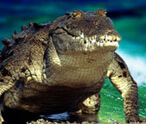
Crocodiles And Alligators
These are the largest reptiles...read more
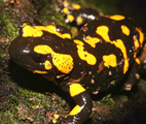
Salamanders Facts
Typically characterized by their lizard-like... read more
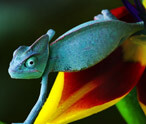
Chameleon Facts
The nature around us abounds in variety...read more
Latest Birds
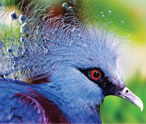
Victoria Crowned Pigeon
With its name...read more
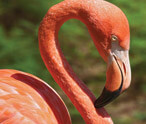
Information About Flamingos
Flamingos are...read more
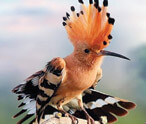
Hoopoe Bird
Famous for its distinctive crown of...read more
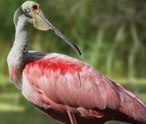
Roseate Spoonbill
The beautiful Roseate Spoonbill...read more


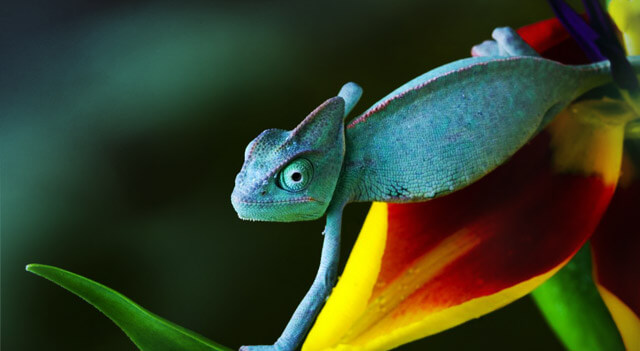
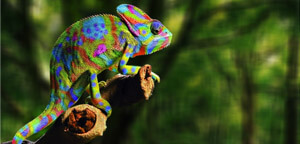
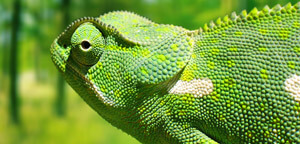
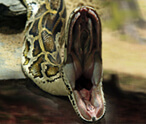

















Largest Birds of Prey in the World by Size and Weight
Also called raptors, the birds...
List of Birds That Fly in V Formation
Did you ever feast your eyes on the amazing phenomenon...
Birds of Prey List
A bird of prey is also known as a raptor or a hunter. It belongs to the group of...
Millipedes Vs Centipedes
Centipedes and millipedes are both arthropods from the group...
Difference Between Warm Blooded and Cold Blooded Animals
Every living organism...
Top 10 Extremely Dangerous Insects
The insects have been grouped in class 'insecta' of...
Sheep Vs Goat
The goat and the sheep are related to each other through the same family. They...
Animals with Blue-colored Blood
Humans and other vertebrates have red-colored blood running...
Birds, Mammals And Reptiles
Before coming to the question of common ancestry of birds...